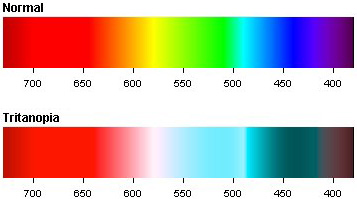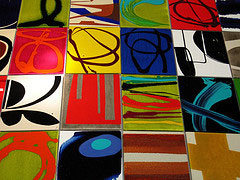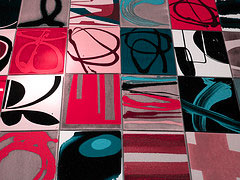Actually the wording blue-yellow color blindness is misleading. People affected by tritan color blindness confuse blue with green and yellow with violet. So the term blue-green color blindness would be more accurate because the colors blue and yellow are usually not mixed up by tritanopes.
Tritan defects affect the short-wavelength cone (S-cone). There are two different types which can be observed:
- Tritanopia: People affected by tritanopia are dichromats. This means the S-cones are completely missing and only long- and medium-wavelength cones are present.
- Tritanomaly: This is an alleviated form of blue-yellow color blindness, where the S-cones are present but do have some kind of mutation.
Blue-yellow color blindness can be observed only very rarely. Different studies diverge a lot in the numbers but as a rule of thumb you could say one out of 10’000 persons is affected at most. In contrary to red-green color blindness tritan defects are autosomal and encoded on chromosome 7. This means tritanopia and tritanomaly are not sex-linked traits and therefore women and men are equally affected.

It can be observed that tritanopes usually have fewer problems in performing everyday tasks than do those with red-green dichromacy. Maybe this is because our society associates green with good/go and red with bad/stop, a pair of colors which accompanies us every day but a clear reason isn’t found yet by the researchers.
Tritan defects can not only be inherited but also acquired during one’s lifetime. In this case it even may be reversible and not permanent like an inherited color blindness. In the case of an acquired defect this is either evolving slowly for example simply through aging or coming instantly caused by a hard hit on your head.
- Because the eye lens becomes less transparent with age, this can cause very light tritanomalous symptoms. Usually they are not serious enough for a positive diagnosis on color blindness.
- Among alcoholics a higher incidence rate of tritanopia could be counted. Large quantities of alcohol resulted in poorer color discrimination in all spectra but with significantly more errors in the blue-yellow versus the red-green color range.
- Mixtures of organic solvents even at low concentrations may also impair color vision. Errors were measured mainly in the blue-yellow color spectrum.
- An injury through a hard hit to the front of back of your head may also cause blue-yellow color blindness. An example story can be found at Tritanopic after Heas Injury.
The two photographs below give you some impression what tritanopes see. On the left side the actual photograph is shown as it is seen by people with normal color vision. On the right side you see the tritan counterpart where you can spot how blue-yellow color blindness influences the view of colors.
 |
 |
Photograph taken by Ottmar Liebert – Some rights reserved
Read more about Deuteranopia and Protanopia—the other two types of color blindness.
Further readings:
Opsin Genes, Cone Photopigments, Color Vision, and Color Blindness
Does Occupational Exposure to Organic Solvents Affect Colour Vision?
Wikipedia: Color Blindness
Related articles:
The Biology behind Red-Green Color Blindness
Colorblind Population
